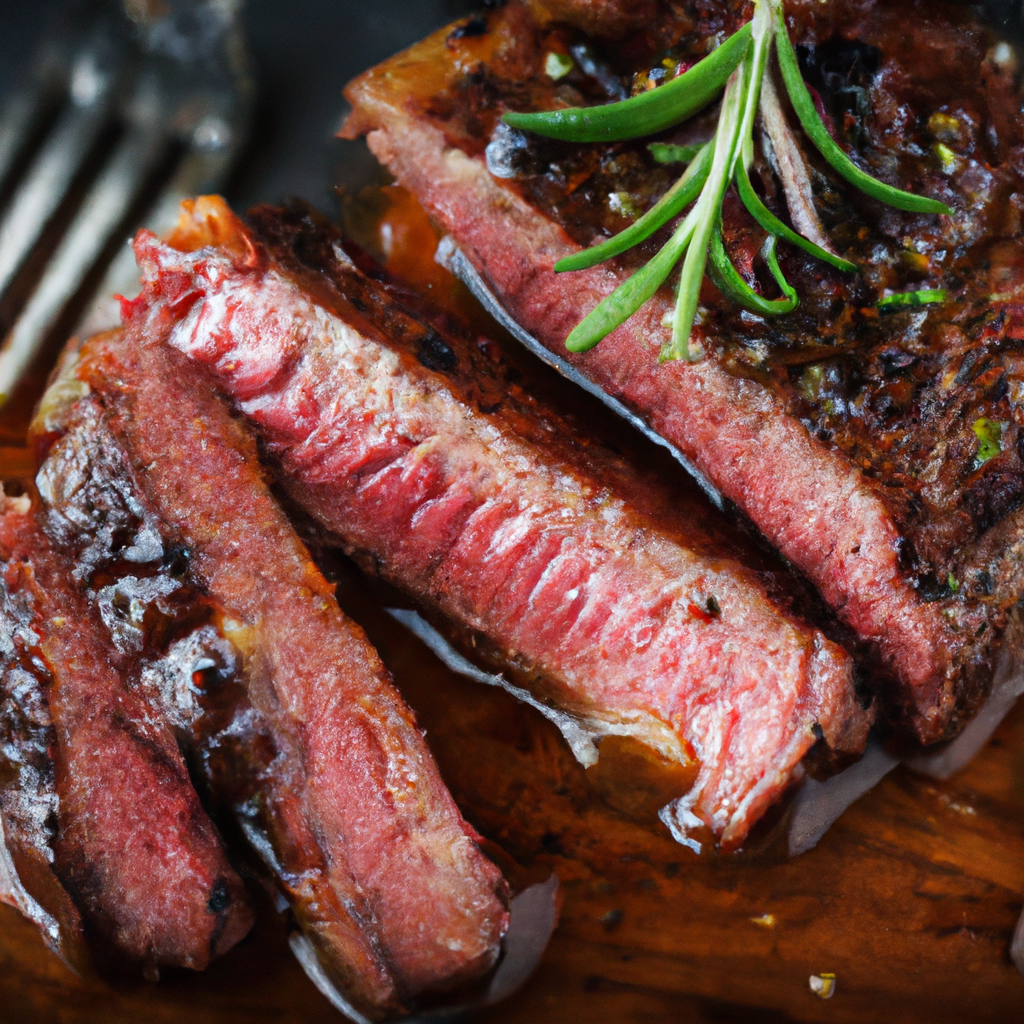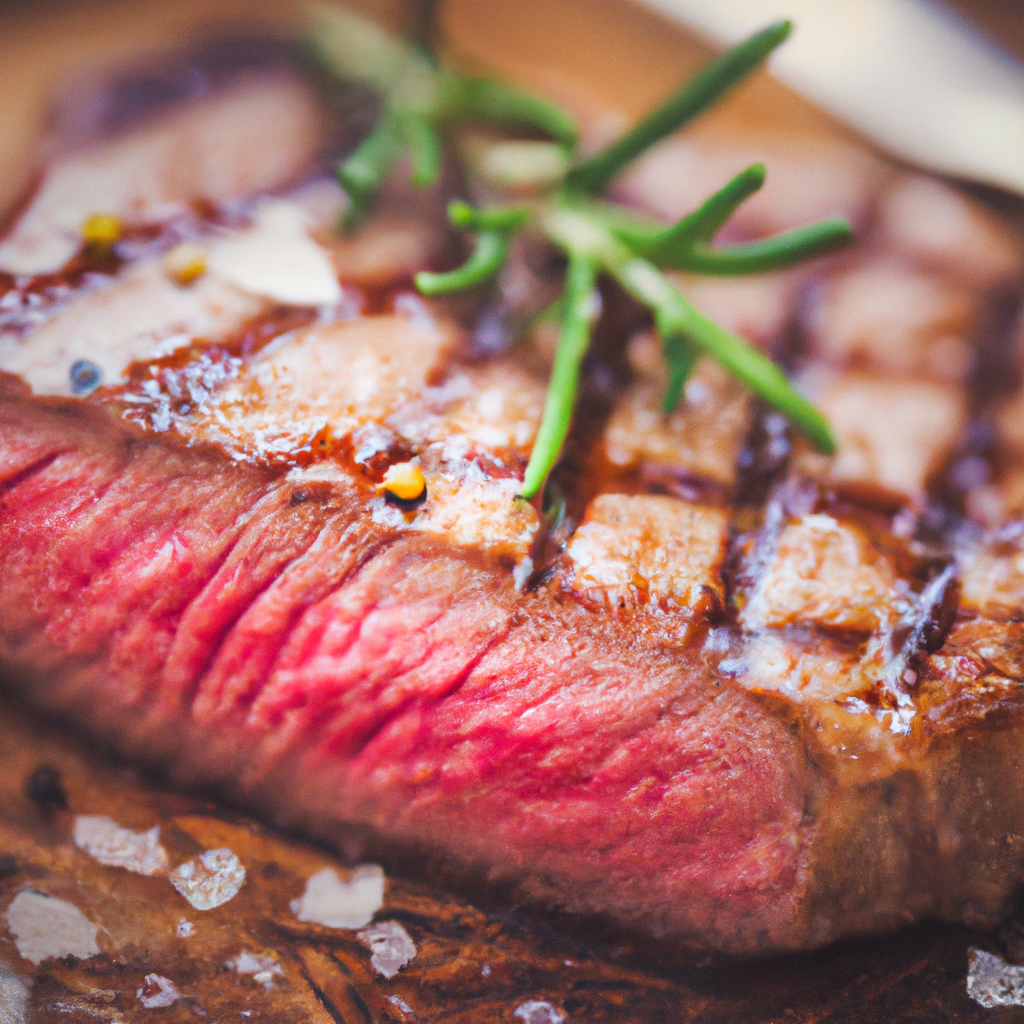In the video titled “Rick Bayless: Grilling 101,” Rick Bayless provides valuable tips for successful grilling. He suggests using a gas grill with one burner turned off to create a cool spot for different levels of doneness. Bayless emphasizes the importance of well-cleaned grill grates and recommends using a spatula with a long handle for fish and tongs for other meats. He also advises doubling the amount of salt for grilling and using marinades with oil and vinegar or herbs/spices. Additionally, Bayless demonstrates how to prevent sticking on the grill and suggests using a cooling rack to allow proteins to reabsorb juices.
Rick Bayless’s practical advice and expertise in grilling provide valuable insights for beginners and experienced grillers alike. By following his tips, you can enhance your grilling skills and create deliciously cooked proteins. Whether you’re grilling fish, beef, or chicken, Bayless’s recommendations, such as using a gas grill with a cool spot, seasoned grill grates, and a spray bottle of oil, can help you achieve the perfect level of doneness. With his emphasis on cleanliness, seasoning, and proper handling of different proteins, Bayless’s advice is bound to elevate your grilling game.
Preparation for Grilling
Grilling is a beloved cooking method that brings out the natural flavors of food and creates a unique smoky taste. Whether you’re a grilling novice or a seasoned pro, it’s always good to brush up on your grilling skills to ensure a successful and delicious meal. In this article, we will guide you through the essential preparations for grilling, including using a gas grill, cleaning and seasoning grill grates, choosing the right tools, the benefits of a spray bottle of oil, and enhancing flavor with salt and marinades.
Using a Gas Grill
Many people prefer using a gas grill for its convenience and ease of use. If you’re using a gas grill, it’s recommended to leave one burner off to create a cool spot on the grill. This cool spot can come in handy when you want to move your food to a lower heat area for coasting to doneness. By having a cool spot, you don’t have to be too precise with timing and temperature control, making grilling a more relaxed and enjoyable experience.
Cleaning and Seasoning Grill Grates
Clean grill grates are essential for preventing food from sticking and ensuring even heat distribution. Before grilling, make sure to thoroughly clean your grill grates to remove any residual food or grease. If you have chrome grill grates, consider looking for an iron grate insert that can hold heat better and be less sticky. Seasoning your grill grates with oil as they heat up can also help create a non-stick surface and add flavor to your food.
Choosing the Right Tools
Having the right grilling tools can make a significant difference in your grilling experience. For grilling fish, it’s recommended to use a spatula with a long handle. The long handle allows you to easily flip delicate fish without breaking it. For other meats and poultry, a pair of long-handled tongs is ideal for easy handling and flipping. Invest in high-quality tools that are durable and designed specifically for grilling to make your grilling process smooth and enjoyable.

This image is property of i.ytimg.com.
Benefits of a Spray Bottle of Oil
A spray bottle of oil is a handy tool to have while grilling. It allows you to easily oil your grill grates and food without wasting excess oil or making a mess. Oiling the grill grates as they heat up can help create a non-stick surface and enhance the flavor of your food. Additionally, lightly oiling your food before placing it on the grill can prevent it from sticking and add a delicious charred flavor.
Enhancing Flavor with Salt and Marinades
Salt is a crucial ingredient when it comes to grilling. It enhances the flavor of your food and helps to tenderize meats. When grilling, it’s essential to add more salt than you think you need. The heat from the grill can diminish the taste of salt, so doubling the amount you would normally use ensures that your food is properly seasoned.
Marinades can also be a great way to enhance the flavor of your grilled dishes. Marinating your meat or poultry in a mixture of oil, vinegar, herbs, and spices can infuse it with delicious flavors. However, it’s important to note that marinades with a high sugar content, such as those with honey or maple syrup, can cause sticking on the grill. If you want to use a sweet marinade, it’s best to brush it on after flipping your food to prevent sticking and create a glaze-like finish.
Grilling Techniques for Different Meats
Grilling different types of meat requires varying techniques to ensure optimal flavor and doneness. In this section, we will explore the best grilling techniques for fish, beef, chicken, pork, lamb, and vegetables.
Grilling Fish
Fish is known for its delicacy and flakiness, making it a bit more challenging to grill compared to other meats. When grilling fish, it’s important to start it in the hottest spot on the grill to achieve a beautiful sear. After a few minutes, carefully flip the fish onto a cooler spot to prevent sticking and allow it to cook through. Using a spatula, gently lift the fish to avoid it from falling apart and preserve its shape.

Grilling Beef
Beef can be cooked to different levels of doneness depending on personal preference. To determine the doneness of beef, it’s helpful to understand the levels of doneness and how the meat feels when touched. The following are the common levels of doneness for beef:
- Rare: This is when the center of the meat feels very soft and offers little resistance when pressed.
- Medium-Rare: The center of the beef will have a little more resistance but still feel tender.
- Medium: The center of the meat feels firmer and springs back slightly when pressed.
- Medium-Well: The center is firm with a touch of softness and has a slight resistance when pressed.
- Well-Done: The beef is firm throughout and offers significant resistance when pressed.
To achieve the desired level of doneness, it’s important to monitor the internal temperature of the beef using a meat thermometer. Let the beef rest for a few minutes before serving to allow the juices to redistribute and ensure maximum tenderness.
Grilling Chicken
Grilling chicken can result in a juicy and flavorful dish if done correctly. It’s important to start with boneless, skinless chicken breasts, as they cook more quickly and evenly on the grill. Before grilling, lightly season the chicken with salt and pepper or your choice of marinade. Place the chicken on the grill over medium-high heat and cook for about 6-8 minutes per side, or until the internal temperature reaches 165°F (74°C). It’s essential to avoid overcooking the chicken to prevent dryness.
Grilling Pork
Grilling pork is a popular choice for many backyard cookouts. Pork can be grilled in various cuts, such as chops, tenderloin, or ribs. It’s important to season the pork with salt and any desired spices before grilling to enhance its flavor. The recommended grilling temperature for pork is medium-high heat. Cook the pork until it reaches an internal temperature of 145°F (63°C) for medium-rare or 160°F (71°C) for medium doneness. Let the pork rest for a few minutes before slicing to maintain its juiciness.

Grilling Lamb
Lamb is a delicious and tender meat that can be easily grilled to perfection. Before grilling lamb, it’s advisable to trim excessive fat and season the meat with salt and herbs or spices. The ideal grilling temperature for lamb is medium to medium-high heat. Cook lamb chops for about 3-4 minutes per side for medium-rare or 4-5 minutes per side for medium doneness. For larger cuts, such as leg of lamb, it’s best to use indirect heat and cook until the internal temperature reaches 145°F (63°C) for medium-rare or 160°F (71°C) for medium doneness.
Grilling Vegetables
Grilling vegetables can add a smoky depth of flavor to your dishes and is a great option for vegetarian or vegan options. When grilling vegetables, it’s best to choose firm and hearty ones that can withstand the heat of the grill, such as bell peppers, zucchini, eggplant, and mushrooms. Before grilling, brush the vegetables with olive oil and season with salt and pepper or desired spices. Place them directly on the grill over medium-high heat and cook until tender, flipping occasionally. The cooking time will vary depending on the type and size of the vegetables but typically ranges from 5-10 minutes.
Achieving Desired Doneness
Determining the doneness of grilled meats is crucial to ensure optimal flavor and texture. Different levels of doneness offer varying degrees of juiciness and tenderness. In this section, we will explore the levels of doneness for meats, how to determine doneness by touch, and the factors that can impact the final result.
Understanding Levels of Doneness
The levels of doneness for meat range from rare to well-done. Each level provides a different experience and requires specific cooking techniques to achieve. Here is a breakdown of the most common levels of doneness and their characteristics:
- Rare: The meat is cooked to the minimum internal temperature and usually has a warm, red center. It is very tender and juicy.
- Medium-Rare: The meat has a warm, red center with a hint of pink. It is slightly firmer than rare but still retains its juiciness.
- Medium: The meat is cooked to a moderate internal temperature and has a warm, pink center. It is firmer and offers a balanced combination of tenderness and juiciness.
- Medium-Well: The meat has a slight hint of pink in the center, but overall, it is mostly cooked through. It is firmer and less juicy.
- Well-Done: The meat is cooked thoroughly and has little to no pink color. It is firm and offers the most cooked texture but can be less juicy.
By understanding the characteristics of each level of doneness, you can choose the one that suits your taste preferences and adjust your grilling techniques accordingly.
Determining Doneness by Touch
One of the most reliable ways to determine the doneness of grilled meats is by touch. By pressing the meat with your finger or a utensil, you can gauge its level of doneness based on its resistance. Here is a guide to determine doneness by touch:
- Rare: The meat feels very soft and offers little resistance when pressed. It feels squishy and retains its shape.
- Medium-Rare: The meat feels slightly firmer than rare but still feels tender. It has a bit more resistance when pressed but should spring back.
- Medium: The meat feels firmer and springs back when pressed. It offers more resistance and has less give.
- Medium-Well: The meat is firm with a touch of softness when pressed. It has more resistance and doesn’t spring back as much.
- Well-Done: The meat is firm throughout and offers significant resistance when pressed. It feels very cooked and doesn’t spring back.
It’s important to note that the level of doneness can vary depending on the type and thickness of the meat. It’s recommended to use a meat thermometer to accurately measure the internal temperature and ensure that it reaches the desired level of doneness.
Factors Impacting Doneness
Several factors can influence the final doneness of grilled meats. The size and thickness of the meat play a significant role in how long it takes to cook and reach the desired doneness. Thicker cuts will require more time on the grill and may need to be finished in indirect heat to ensure even cooking.
The temperature of the grill also affects the cooking time and doneness. A hotter grill will cook the meat faster, while a cooler grill will result in a longer cooking time. It’s important to find the right balance of heat to achieve the desired level of doneness.
Additionally, the type of meat and its fat content can impact the final result. Lean meats, such as chicken breast, cook more quickly and can dry out if overcooked. Fattier cuts, like ribeye steak, can handle a higher level of doneness and retain their juiciness.
Monitoring the internal temperature using a meat thermometer is the most accurate way to determine the doneness of grilled meats. This ensures that the meat is cooked to a safe temperature and allows you to achieve the desired level of doneness consistently.
Important Tips and Considerations
Grilling is a versatile and enjoyable cooking method, but it can also present some challenges. In this section, we will discuss important tips and considerations to make your grilling experience even better.
Using a Cooling Rack
Using a cooling rack can greatly improve the quality of your grilled proteins. Placing your meat or poultry on a cooling rack allows it to reabsorb the juices that are released during cooking. This helps to maintain moisture and enhance the overall flavor of the grilled food. Additionally, using a cooling rack prevents sticking and keeps the proteins from touching the surface of the grill, which can cause them to stick and lose their shape.
Preventing Sticking
Sticking is a common issue when grilling, especially with delicate foods like fish. To prevent sticking, make sure to clean and oil your grill grates before placing your food on them. Preheating your grill thoroughly also helps create a non-stick surface. When grilling fish, start it in the hottest spot on the grill to achieve a beautiful sear. After a few minutes, carefully flip the fish onto a cooler spot to prevent sticking and allow it to cook through.
Closing the Grill
Closing the grill while cooking can create more heat and even add a touch of smokiness to your food. However, it’s important to be cautious of flare-ups and oil. Closing the grill can cause flare-ups due to the trapped oxygen, so it’s essential to keep a close eye on the grill and adjust the heat if necessary. Additionally, excess oil from marinades or fatty meats can drip onto the heat source and cause flare-ups. To minimize flare-ups, trim excess fat from the meat and use a drip tray or pan to catch any drippings.
Avoiding Flare-ups and Oil
Flare-ups can occur when fat drips onto the heat source or flames erupt suddenly. While some flare-ups can add flavor to your food, excessive flare-ups can lead to uneven cooking and burnt spots. To avoid flare-ups, trim excess fat from the meat and use indirect heat cooking methods. If a flare-up occurs, carefully move the food away from the flames or reduce the heat until the flames subside.
Additionally, be mindful of oil when grilling. Excess oil can drip onto the heat source, causing flare-ups and smoke. Using a spray bottle of oil can be helpful for lightly coating the grill grates and food without using too much oil. This allows for better control and minimizes the risk of flare-ups.
Post-Grilling Cleaning
Cleaning your grill thoroughly after each use is essential for maintaining its longevity and preventing the buildup of residue. Once the grill has cooled down, remove the grates and scrub them with a grill brush to remove any leftover food particles. If necessary, use warm soapy water for a more thorough cleaning. Wipe down the exterior of the grill with a damp cloth or sponge, and empty and clean the drip tray or pan. Regular cleaning ensures that your grill is ready for the next grilling session and maintains its performance.
In conclusion, grilling is a wonderful cooking method that allows you to showcase the natural flavors of food and create delicious and satisfying meals. By following these tips and techniques, you’ll be well-equipped to prepare a wide variety of grilled dishes, from juicy steaks to flavorful vegetables. Remember to experiment with different flavors and marinades to customize your grilled creations to your liking. Enjoy the process of grilling and savor the mouthwatering results!

